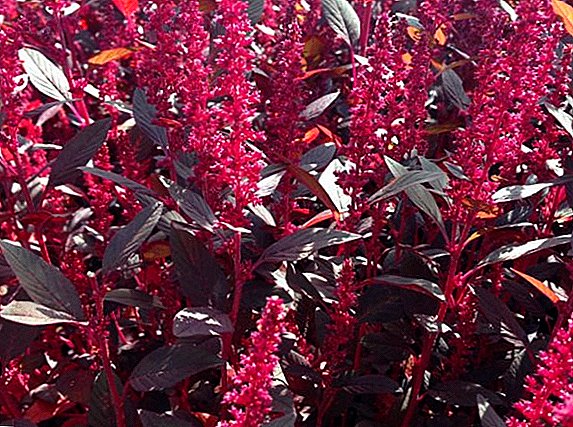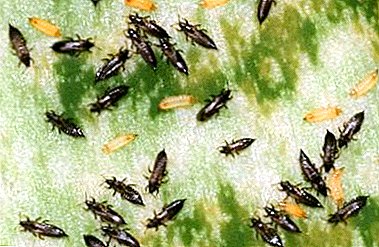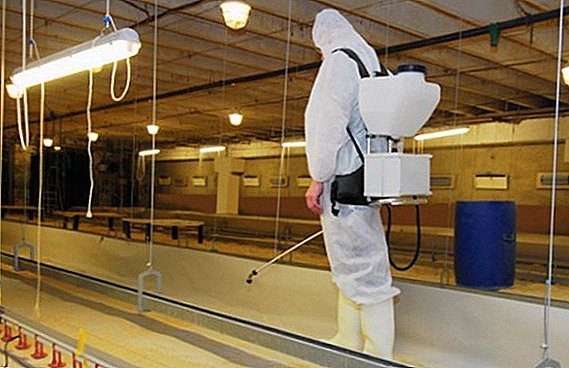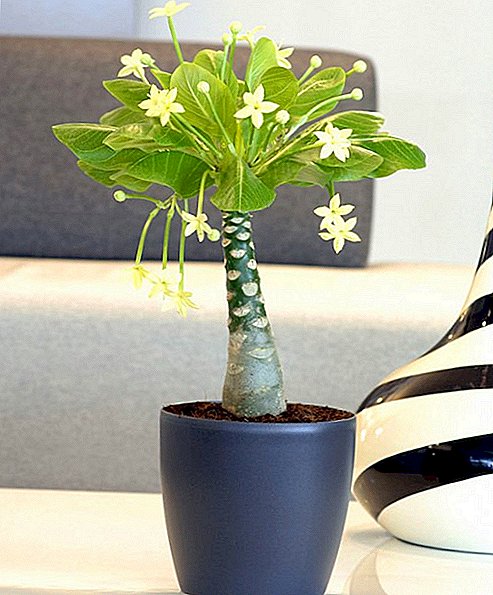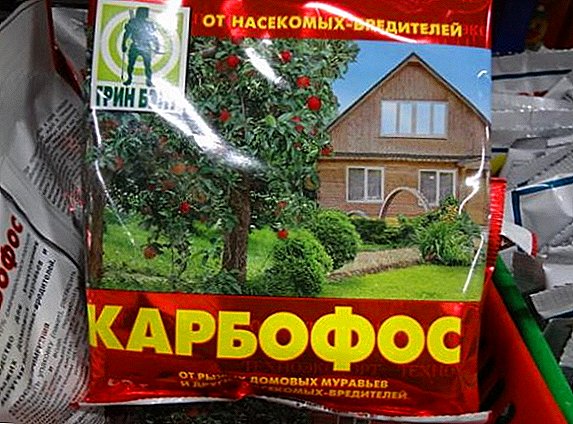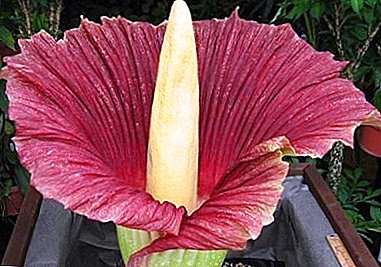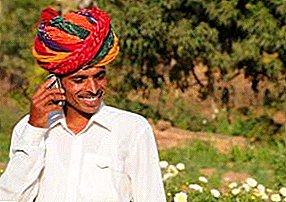
Not every gardener decides on the cultivation of tomatoes. Many either do not have the ability to place greenhouses on the site, or they simply do not have enough time or energy to bother with seed germination, growing seedlings, caring for adult plants.
Growing tomato seedlings for open ground is an important procedure because it allows you to grow healthy tomatoes and get a rich harvest. The article will tell everything in detail about this event. We also describe the features of growing seedlings of tomatoes.
Disadvantages and advantages
Among the disadvantages of growing seedlings are the following:
- time and effort;
- the inability to grow large volumes due to the lack of space and a large amount of lighting;
- seedlings can grow weak and sick - it will not give a good harvest.
However, this procedure has its advantages:
- the agronomist will be confident that the seedlings are grown without adding any chemicals;
- if you can grow the seedlings correctly, you can get a high yield.
How to determine the time of sowing tomatoes?
Usually tomatoes are sown 55-65 days before planting in open ground. Saplings appear quickly - literally in a week. Therefore, the seedlings will be indoors for about a month and a half.
Approximate dates of planting seedlings:
 in the south of the country - from the third decade of February to mid-March;
in the south of the country - from the third decade of February to mid-March;- in the central regions of Russia - from March 15 to early April;
- in the northern parts of the Russian Federation (Siberia, the Urals) - from the beginning to the middle of April.
To accurately determine the timing of sowing tomatoes in your area, you need to know the specific date of the end of frost. It is from this figure that you need to take 55-65 days.
If the grower plans to move the seedlings not into the open ground, but into the greenhouse, then the sowing begins 2-3 weeks earlier.
Soil preparation
The soil for planting seeds is best to buy ready-made in a flower shop - it is the most suitable. However, if the grower took the land from the garden plot, it needs to be disinfected so that the seedlings do not die. Here are the main types of tillage:
- Roasting in the oven for a quarter of an hour. The oven must be heated to 180-200 degrees.
- Warming up in a microwave (power must be put on 850).
- Boiling water treatment. To do this, place the soil in a container with holes at the bottom and thoroughly spill it with boiling water. After that, the water should drain completely and the soil should be dried.
- Disinfection with a saturated solution of potassium permanganate. Method of application is the same as with boiling water.
You can use several methods at once to get maximum benefits.
Immediately after processing the soil can not be used. The soil should be watered with ordinary water and held at a temperature of 8-10 degrees Celsius for two weeks. Thus, beneficial bacteria will develop in the substrate.
Seed preparation and planting
Before sowing, it is necessary to process not only the soil, but also the seeds.
To get rid of existing infections in planting material, you can use one of the following methods:
- Potassium permanganate solution - 1 g of the product diluted in 0.1 liter of pure water. In a solution, moisten any natural fabric and put seeds there for a third of an hour. Exposure time should not be increased, as this may lead to a decrease in seed germination.
- Soda solution. 0.5 g of soda dissolved in 0.1 liter of water. In such a tincture keep the seeds for a day. Such a manipulation not only disinfects crops, but also reduces the time of germination.
- Tincture on aloe juice. Dilute with water in a 1: 1 ratio. To withstand the seeds need for 12-24 hours. Such tomatoes have high immunity, high yields and overall quality of tomatoes.
- Phytosporin solution - for this, one drop of the drug is diluted in 0.1 liter of water. Seeds should be in the solution for only a couple of hours.
In the planting container (it can be a peat cup or any plastic containers) pour the prepared moist soil. Then in the soil furrows are made to a depth of 1 centimeter. The distance between the furrows should be approximately 3-4 centimeters.. Retreat from the seeds need 1-2 cm and even more.
The greater the distance between crops, the more time you can keep the seedlings in the room. After this, the seeds are sprinkled with a small amount of soil. And then the crops are covered with film or glass.
Watering frequency
 Moisture soil should be probed daily.. If the substrate is dry, it needs to be watered, but this can only be done with a spray bottle. Otherwise, the seeds can be washed. If the situation with humidity is reverse, and the soil remains wet for a long time, you need to open the film for a while and wait until the earth dries out.
Moisture soil should be probed daily.. If the substrate is dry, it needs to be watered, but this can only be done with a spray bottle. Otherwise, the seeds can be washed. If the situation with humidity is reverse, and the soil remains wet for a long time, you need to open the film for a while and wait until the earth dries out.
It happens that excessive moisture can cause the formation of a layer of mold. Therefore, you need to get rid of mold manifestations manually, and then treat the soil with a solution of potassium permanganate or an antifungal agent (for example, Fundazole or Fitosporin).
As soon as the seedlings grow a little, and the film is gone, you need to increase the frequency of watering, as the grown seedlings absorb it faster. It is better to water the seedlings every morning before the sun takes off.so as not to form a crust.
Temperature conditions during cultivation
In order for the seeds to grow, they must first be kept at a temperature of 25-30 degrees above zero. The first shoots will appear within a few days - during this period, the temperature should be maintained at 23-27 degrees Celsius. A week later, the temperature drops to + 20-22 degrees. And after seven days and all other days, the seedlings should grow in the air, heated to + 12-15 degrees.
Picking
The first leaf plates of seedlings appear already on day 10 after germination. If the seeds are planted too thickly, at this time it will be necessary to plant the seedlings in separate containers. Tomatoes are well tolerated seating, but nevertheless, it should be done with extreme caution.
Transfer the seedlings to the pot with a lump of soil on the roots. There is no need to pinch the roots, because after this the seedlings may die.
Vases for the first transplant should be approximately 0.2 liters. After 15-20 days after the first transplanting, you need to change the pots to larger ones. Optimal volumes - one-liter pot per plant.
We offer to watch a video on how to properly pick picking tomato seedlings:
Fertilization after picking
As soon as the tomatoes have been dived, top dressing should be applied to the ground.. And then they are made every seven days. More often it is not necessary, since such a procedure can lead to the development of plant diseases. The most suitable fertilizers are organic - manure or droppings. If you choose among the means of purchase, it is better to give preference to tools based on guano or biohumus.
We offer to watch a video about fertilizer application after picking tomato seedlings:
Lighting
Without good lighting it is impossible to grow healthy seedlings. Therefore, as soon as the first shoots appeared, the containers should be put on a well-lit place. If the process takes place in February-March, natural lighting will still not be enough, so you will need to use phytolamps. If there are none, you can use ordinary fluorescent ones.
Hardening
 It should be noted that the absence of a hardening procedure will lead to the withering and death of the transplanted plant.
It should be noted that the absence of a hardening procedure will lead to the withering and death of the transplanted plant.
Hardening should be carried out 10-15 days before disembarking to a permanent place. You need to start with a short period of time - about half an hour. By the time of planting tomatoes quenching period should reach 10-12 hours.
This procedure will help not only improve the immunity of tomatoes, but also their taste. Besides hardened tomatoes can be on the site before the first autumn frosts.
We offer to watch a video on how to properly hardening tomato seedlings:
Landing Instructions
Next, tell you how to properly plant tomatoes seedlings. The distance between rows of tomatoes in open ground should be approximately 30-40 centimeters. Best of all, before planting, you need to add peat to the soil (well, if this is black soil) (it can be replaced with purchased peat soil).
For transplanting seedlings, you need to choose a cloudy, cool, windless day. Planted seedlings need a depth of several centimeters. After 2-3 days, additional roots will appear on the roots, then the root system will strengthen and become more powerful. There is another way of landing.
You can not shake off the roots of earthen coma, and plant with him in the open ground. Then a hole is prepared for the seedling, the dimensions of which are slightly larger than the volume of the root itself with the soil.
We offer to watch a video on how to properly seed a tomato seedling:
Conclusion
Growing tomato seedlings at home is not very easy. But it is necessary if the agronomist wants to get a healthy and rich harvest.


 in the south of the country - from the third decade of February to mid-March;
in the south of the country - from the third decade of February to mid-March;